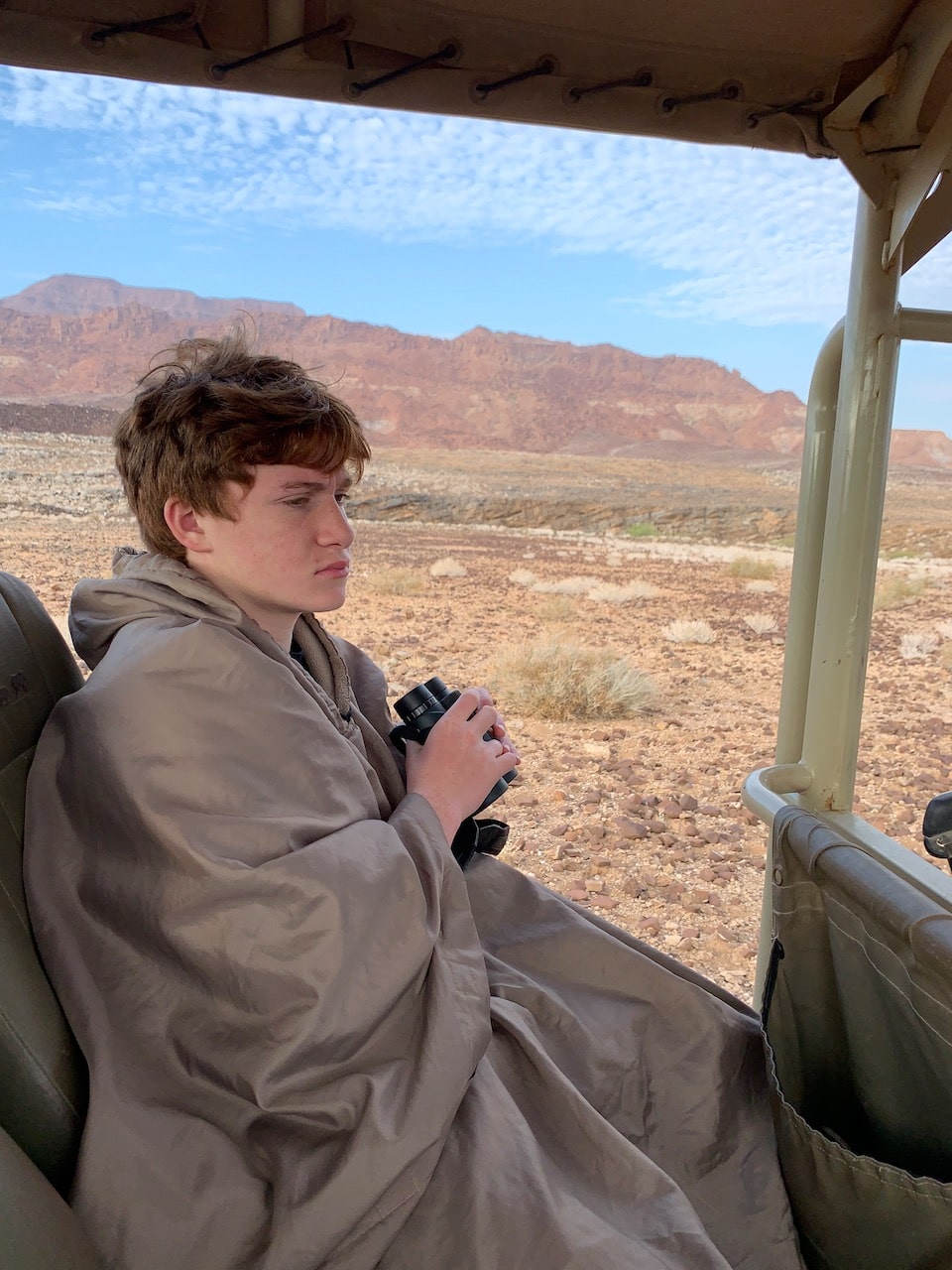We had a spectacular morning.
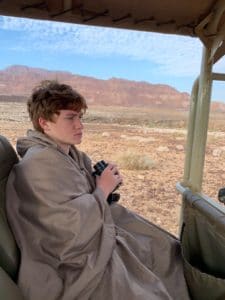
Searching for the elephants.
Getting up very early, we left with the camp guide in search of the desert elephants. The first hour was disheartening – driving up and down dry river beds, speaking to cowherds, calling in to neighboring camps – but to no avail. We did see jackals and many vultures at the scene of a dead lamb – perhaps a leopard kill from the night before?
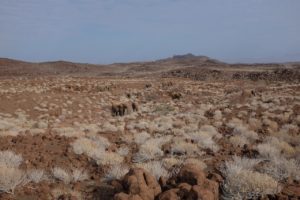
Desert elephants are huge, but they blend in so perfectly with the landscape that they can be hard to spot.
And then, we got lucky. Our guide picked up the trail of an elephant and we started driving up and down hills, in and out of river beds, until amazingly, on the opposite bank of a dry river, we spotted the herd. Massive mother and grandmother elephants, with babies of all sizes – from one so tiny that it remained underneath its mother all the time. to slightly older calves to sprightly juniors! We stayed with them for quite a while, and even radio’d to another jeep exactly where to find our position, and then it was time to leave. A truly amazing experience. See the baby elephant and it’s mom on video here: IMG_2672
Back at camp, we learned that the things across the world were changing by the hour. We would have to cut our trip short by 4 days – ending our short but amazing time in Damaraland instead of continuing to a remote bush camp where we had planned to camp out and explore the region on foot, and also cutting our time in Etosha from 3 nights to one night. But there was nothing to be done, The world was closing down, and we had a flight booked which we had to catch.
That afternoon we raced to Etosha. Etosha National Park is the largest game reserve in Namibia and one of the largest in Africa. It is best known for the the Etosha pan -a huge salt pan where animals gather to lick the salt, which is critical to their well being. The lodges in the area are legendary, but we would only have time to visit one.
That evening, we embarked on a game drive on a private concession just outside the national park. We hoped to see rhino, but summer is the rainy season in this part of Namibia and so sightings are much harder due to the dense bush and grasses that come up at this time of year. We did see a fabulous pride of lions, lazing as they often do – perhaps they just had a kill a day or two before.
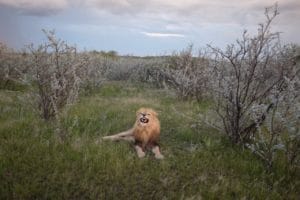
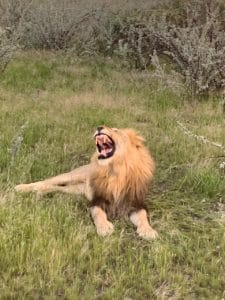
Showing us who is boss!
On the way back to camp, the daily thunderstorm hit us – rain pelted down, and lighting flashed.
Dec-March is the rainy season in most of southern Africa, and the best time of year to see animals is during the winter dry season. But summer has its own special advantages – spectacular vegetation, incredible warm evenings, spectacular storms.
For an unforgettable trip to Namibia, contact the team at Quivertree!
